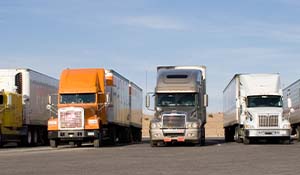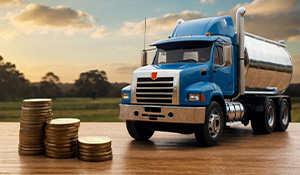2019 Dakar Rally
Kamaz may not be a name familiar to a lot of Aussies, but if you’ve been following the annual Dakar rally, you’ll be very familiar with the brand, as they’ve been the most successful truck in the annual ‘rally raid’, ie. marathon rally, for the past decade.
History of Success
Founded in 1969, Kamaz was literally a ground-up operation, requiring an all-new factory to be built, using what was then the Soviet Union’s most advanced construction and manufacturing techniques. The first Kamaz-branded truck didn’t roll out of the factory until 1976, but since then, more than 2.25 million trucks have been produced, as well as almost 3 million engines.
Kamaz’s racing operations – the ‘Kamaz Master Team’ - were founded in 1988 and the brand first competed (with trucks based on Kamaz’s military models) in the Paris-Dakar in 1990. Back then, the Dakar still started in Paris and ran to Dakar, the capital of Senegal on the west coast of Africa.

In the years that followed, the start and finish location would change, but a constant was gruelling conditions in the remote deserts, mountains and desolate plains of North African countries like Mauritania, Mali and Morocco, with competitors – in trucks, cars and on motorcycles - covering hundreds of kilometres each day in a rally raid that ran for a fortnight and usually covered close to 10,000 kilometres.
Mercedes-Benz and Italian manufacturer Perlini had been the winning brands throughout the 1980s, but when Kamaz won their first title in 1996, they broke the streak of Tatra, who had won the truck division in the previous two years.
Since that debut victory, Kamaz has won the Dakar’s truck division an additional fourteen times, including five in a row from 2002 and the first Dakar rally held in South America in 2009 after the event was relocated from Africa over terrorism concerns. That record of success also includes 2017 and 2018, when Eduard Nikolaev drove his Kamaz to victory, setting him up for a three-peat this year.

Peru Only
This year’s Dakar was the first in the event’s South American history to take place in one country, specifically Peru, with the course including 2,817km of timed special stages and covering more than 5,000km in total. This was shorter overall than previous years, but with the course consisting predominantly of sand, including the fine, powdery sand known as ‘fesh-fesh’, it would be anything but easy.
In a field of 541 total competitors and 334 vehicles entered for this year’s 10-stage Dakar, there were 41 trucks, including four-truck teams from both Kamaz and Iveco. Also represented were Tatra, Hino, MAZ, Renault, DAF and Ford, with crews (most trucks carry a driver, co-driver and mechanic) from Russia, France, the Netherlands, Japan, Czech Republic, Spain, Slovakia and Belarus, to name a few of the countries represented.
Defending champion Nikolaev would have Ayrat Mardeev, Andrey Karginov and Dmitry Sotnikov in the other three trucks of the Kamaz Master Team, while the Petronas Team de Rooy Iveco squad was made up of two-time truck division winner (2012 and 2016) Gerard de Rooy, supported by Tom van Genugten, Maurik van den Heuvel and Federico Villagra – all in Iveco Powerstars.

The only rookie this year was Yves Rutten, who was part of an all-Belgian crew in a Ford Otosan CAR40 prototype cabover for the VDR Truck Racing team alongside a second truck piloted by Peter van Delm.
Amongst the other competitors, Yoshimasa Sugawara is worthy of special attention, as the 77-year-old has been competing in the Dakar since 1983 and racing in the truck division since 1992. Running Hino 500 Series trucks (aka Hino Rangers) in all those years, Sugawara has finished second in the division on six occasions, but has won the ‘Under 10-litre’ subcategory seven times.
Yoshimasa’s son, Teruhito, has followed in his father’s wheeltracks, first as a co-driver in 1999, then taking on the driver’s role in a second ‘Team Sugawara’ Hino in 2005. Coming into this year’s Dakar, Teruhito has won the Under 10-litre subcategory on nine straight occasions, with a best placing in the general truck category of sixth, achieved last year.

Kamaz Starts Strong
Kicking off in Lima on 7 January, the opening day of Dakar 2019 was fairly mild, consisting of 84km of timed special and 247km of transit, aka liaison, driving. Nikolaev won the first stage, only seconds ahead of the de Rooy Iveco of van Genugten.
The serious racing got underway the next day, with a 342km special for Stage 2 that combined dunes with sandy tracks and even some beach driving. Nikolaev won again, while de Rooy finished second, despite suffering a puncture which led to a fire under his truck late in the stage.
Sugawara senior struggled in the dunes on this stage, losing lots of time, while drama of a more serious nature struck Martin van den Brink, the Dutchman rolling his Renault, then suffering an engine failure that put him out of the rally. Stage 3 saw more sand, this time in the Duna Grande and Duna Argentina regions that featured 331km of timed special and 798km total driving for the day.

Repeating his form of the first two days, Nikolaev went out hard again on this stage, but had dropped to fifth within 100km. Last year’s overall runner-up, Siarhei Viazovich (MAZ) managed to put his truck on its side while trying to outpace the Kamazes, losing a bunch of time as he waited for recovery.
Following his problems the previous day, Yoshimasa Suguwara retired on this stage with steering problems, but Teruhito carried on, completing the stage in tenth place and improving to twelfth overall. Karginov kept Kamaz at the top, finishing Stage 3 ahead of Villagra, but Nikolaev’s fourth meant he retained the overall lead.
Another day of dunes on Stage 4 - 351km special and 662km total – was made more complex by rocky trails and miles of fesh-fesh on the Pampa de la Clemesi on the way to the bivouac at Moquegua.

Nikolaev lost time on this stage, with Martin Macik (Liaz) taking advantage, but the Czech couldn’t hold that advantage; Karginov triumphing again and edging closer to Nikolaev, who still led the overall standings after four days.
Stage 5, the longest of the entire 2019 Dakar, consisted of a 451km ‘marathon’ special section through fesh-fesh and narrow rocky canyons before returning to dunes and 194km of liaison ahead of the well-earned rest day at Arequipa.
The Ivecos started fast on this stage; de Rooy leading early and van Genugten close behind, but de Rooy lost time when he crested a dune only to crash into a competitor from the car division. Macik’s rally was over at the 250km mark on this stage after a heavy landing from a jump destroyed the front axle of his Liaz.
More drama came later in the stage when Karginov hit a spectator and failed to stop to render assistance, which resulted in him being disqualified from the rally. Nikolaev completed the marathon stage first, but this result was later overturned, with van Genugten elevated to the stage win, breaking the stranglehold the Kamazes had enjoyed to date.

Return to Lima
With the first five stages of the Dakar taking the trucks south from the Peruvian capital to Tacna near the Chilean border, the next five stages would see the competitors slowly return to Lima. The first half of the Dakar had already accounted for nine trucks, but despite the forced retirement of Karginov, the Kamazes were still running strong, with Nikolaev retaining the overall lead he’d held since Stage 1, but with a margin of less than 12 minutes to Sotnikov.
Whether they were conserving their lead or struggling with the conditions, all the Kamazes were off the pace in the challenging Tanaka dunes on Stage 6. The Ivecos were quick out of the blocks, but Viazovich absolutely bolted and completed the stage first. However, his performance was later explained by the fact he’d missed a waypoint, which cost him an hour’s penalty and dropped him to fifth for the stage. That meant another win for Sotnikov, which also saw him inherit the overall lead from Nikolaev.
After a gruelling 290km special on Stage 6, an even tougher 323km special greeted the starters for Stage 7, the route characterised by more fesh-fesh and more rocky trails. The Ivecos were once again quick out of the blocks, with van den Heuvel and van Genugten leading, but it would be de Rooy who won the stage; his first on the 2019 Dakar

Viazovich tried hard to claw back the time lost the day before and finished second on Stage 7. Nikolaev was a little over half an hour behind de Rooy, but Sotnikov was even further back, finishing the day almost an hour and a half adrift of the leaders and losing his overall lead.
Stage 8 would prove to be a game changer – and potentially a race decider – when Nikolaev bogged in soft dunes only a few kms into the 360km timed special. He and his crew spent almost an hour digging themselves out of the sand, losing the stage and the overall to Sotnikov by almost 27 minutes.
Iveco’s van den Heuvel bogged within sight of Nikolaev on the same section, but with his truck on its side, a recovery was much more problematic and the Dutchman wouldn’t reach the day’s bivouac until almost five hours after the stage’s top finishers.

The penultimate stage of the 2019 Dakar consisted of a 311km loop around the Ica desert at Pisco, with competitors starting in pairs. Sotnikov and van Genugten were first away, but Nikolaev was flying, passing those ahead and gobbling up the time lost the previous day. Winning his first stage since Stage 2, Nikolaev not only regained the time lost to Sotnikov, but leapfrogged him to take a lead of almost half an hour into the final day.
The tenth and final day of competition in the 2019 Dakar, a fairly sedate 112km of timed special around the dunes of Pisco before a long liaison section back to Lima, presented few opportunities to gain position, so Nikolaev would have to roll his Kamaz or have a major mechanical drama to lose his lead. That didn’t happen, so Sotnikov could do little but escort Nikolaev to victory, while van Genugten was allowed to charge ahead and take the stage win ahead of Ales Loprais (Tatra).
Proof of the harder-than-it-looked nature of this year’s Dakar was the fact that, of the 41 trucks that started in Lima, only 14 crossed the finish line eleven days later.

Three-Peat
Winning his third successive Dakar truck title, and fourth overall as a driver, Nikolaev acknowledged this year’s Dakar was tough: “Yes, it was a very difficult race – a lot of dunes, a lot of sand and very strong competitors – my competitors (team mates) and Team Iveco’s Gerard de Rooy and Federico Villagra.
“Thank you for the race. I’m very happy. I’m happy with my crew [and they] worked perfectly. I’m happy!” When asked if he made any mistakes or encountered any problems with his truck, Nikolaev only identified the time he got stuck in the sand dunes on Stage 8. “This is a brand new generation of race trucks for our team, created in accordance with the new regulations of the race. We are particularly happy that the truck did not let us down.”
Images: ASO, Red Bull Content Pool














